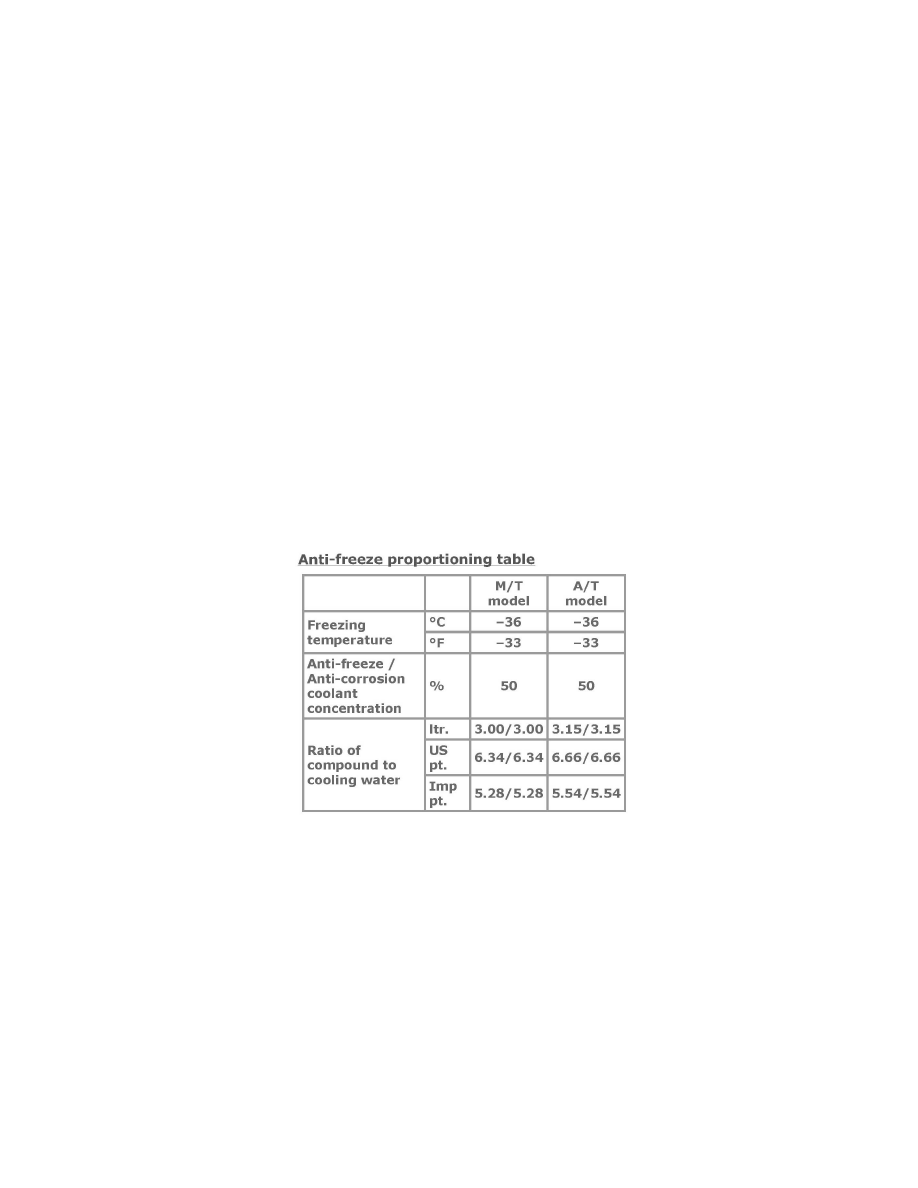SX4 4WD L4-2.0L (2008)

Coolant: Description and Operation
Coolant
WARNING:
^
Do not remove radiator cap to check engine coolant level; check coolant visually at the see through coolant reservoir. Coolant should be
added only to reservoir as necessary.
^
As long as there is pressure in the cooling system, the temperature can be considerably higher than the boiling temperature of the solution
in the radiator without causing the solution to boil. Removal of the radiator cap while engine is hot and pressure is high will cause the
solution to boil instantaneously and possibly with explosive force, spewing the solution over engine, fenders and person removing cap. If
the solution contains flammable anti-freeze such as alcohol (not recommended for use at any time), there is also the possibility of causing
a serious fire.
^
Check to make sure that engine coolant temperature is cold before removing any part of cooling system.
^
Also be sure to disconnect negative cable from battery terminal before removing any part.
The coolant recovery system is standard. The coolant in the radiator expands with heat, and the coolant is overflowed to the reservoir.
When the system cools down, the coolant is drawn back into the radiator.
The cooling system has been filled with a quality coolant that is a 50/50 mixture of water and ethylene glycol antifreeze.
This 50/50 mixture coolant solution provides freezing protection to -36°C (-33°F).
^
Maintain cooling system freeze protection at -36°C (-33°F) to ensure protection against corrosion and loss of coolant from boiling. This should be
done even if freezing temperatures are not expected.
^
Add ethylene glycol base coolant when coolant has to be added because of coolant loss or to provide added protection against freezing at
temperature lower than -36°C (-33°F).
NOTE:
^
Alcohol or methanol base coolant or plain water alone should not be used in cooling system at any time as damage to cooling system could
occur.
^
Coolant must be mixed with demineralized water or distilled water.
Anti-freeze proportioning table
Coolant capacity
^
M/T model
Engine, radiator and heater: 5.3 liters (11.20/9.33 US/imp pt.)
Reservoir: 0.7 liters (1.48/1.23 US/imp pt.)
Total: 6.0 liters (12.68/10.56 US/imp pt.)
^
A/T model
Engine, radiator and heater: 5.6 liters (11.83/9.86 US/imp pt.)
Reservoir: 0.7 liters (1.48/1.23 US/imp pt.)
Total: 6.3 liters (13.31/11.09 US/imp pt.)
